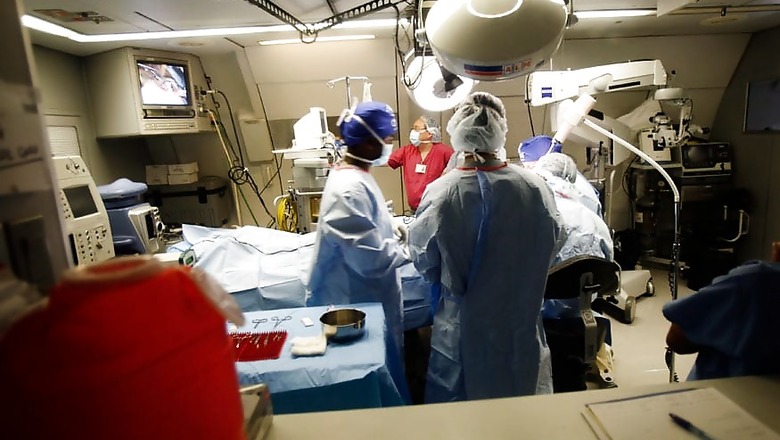
views
This year, the government has announced “world’s largest government funded health care programme” titled National Health Protection Scheme (NHPS) to cover over 10 crore poor and vulnerable families (approximately 50 crore beneficiaries). The scheme will give “coverage up to Rs 5 lakh per family every year for secondary and tertiary care hospitalization”. This can be seen as a follow-up and expansion of a similar announcement made in 2016-17 budget.
Two announcements made in the two budget speeches separated by two years raise concern over the governmental approach to health, healthcare, and health coverage.
India is second most populous country in the world. Any population level programme in India would be ‘world’s largest’. For example, India is running ‘world's largest school feeding programme since its inception in late 1970s. In Indian context, proportion is more important as absolute numbers will hide more than what it will reveal.
According to latest estimates of NFHS 4(2015-16), 29% households had insurance coverage. This would mean that of 29 crore individuals or seven crores families, are already covered under some form of health insurance. Of these, 83%, (49% under state-government funded health schemes and 34% under RSBY), i.e. around six crore families, are already covered under government-funded schemes. Even if we consider that the proposed NHPS will subsume all existing schemes, the proposed target of 10 crore families involves an addition of 3 crore households only.
The proposed target of 10 crore ‘poor and vulnerable’ families is practically an ambitious target of covering all BPL households in the country. This is because RSBY, after a decade of coverage, has only 3 crores cardholders – schemes target was to give coverage to all BPL which was estimated to be about 30 crore people. The intention of covering all people is commendable; however, it will call for time and resources, apart from a robust system that promotes equity.
Total allocation for first year of implementation of the scheme is Rs. 2, 000 crores.Let us understand this amount in a context of population coverage. With an average premium of Rs 500 for Rs. 30,000 coverage, Rs. 1800 crore is an envelope for RSBY for covering 3.6 crore families. The proposed allocation would need to be substantially improved and sustained over many years to come to realize the ambitious NHPS coverage.
Assuming that NHPS would be offered like RSBY, an annual premium in the tune of Rs. 20000 – Rs. 30000 would be required. Even if this is reduced to. 10,000 per family per year, India would need Rs. 100,000 crores to pay premium for proposed NHPS. Even more conservative premium of Rs. 2000 per family per year, would warrantRs. 20,000 crores. Assuming that the scheme will be rolled out over five years to cover two crores family every year, India would need Rs. 4,000 crores per year to provide for such coverage, without considering inflation. Such increase in financial allocation is not impossible. However, disbursement and absorptive capacity of the health system needs rapid and sustained strengthening.
The intention of subsuming all existing schemes under a ‘single payer’ mechanism may not be easy. State-level insurance coverage ranges from five to six percent in Jammu and Kashmir and Uttar Pradesh to more than two-third of state population in Tamil Nadu and Andhra Pradesh. The high-coverage state level schemes are running on state funds, without centrally sponsored RSBY. These states would difficult to convince to give up their populist schemes.
WAY FORWARD
The budgetary announcement of NHPS is a good step in right direction, but it cannot be a panacea for India’s ailing health sector. India needs to focus on health, healthcare, and health coverage of its population. While multipronged reforms are needed to strengthen India’s public health sector, a strong regulation is needed to make private health sector more accountable. NHPS, as a health insurance scheme, can only offer financial protection. However, such schemes are necessary but not sufficient for ensuring universal health coverage. Even for expanding health coverage, India needs to moveaway from ‘schemes for poor’ mode, and explore ways to combine all existing health coverage options into one comprehensive coverage for all its citizens. Ultimately, a scheme for ‘poor and vulnerable’ will always be poorly thought-out and poorly funded scheme, and therefore, will remain vulnerable to inadequacies.
(Mayur Trivedi is Associate Professor with Indian Institute of Public Health Gandhinagar. The views expressed are personal.)



















Comments
0 comment